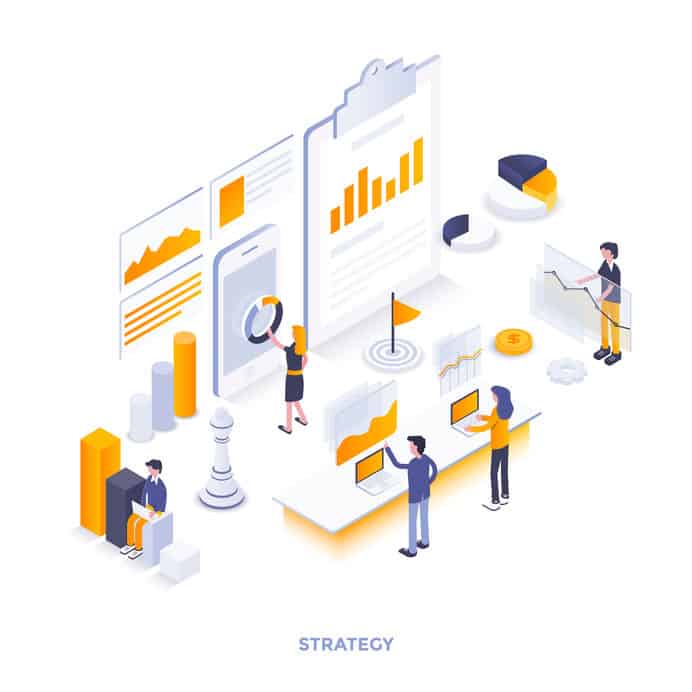What is a STEEP Analysis?
A STEEP analysis is an analysis technique that is often used by organisations and businesses to trigger discussions and evaluate external factors that may impact the design and decisions of a business or organisation. In this analysis technique, factors are examined socially, economically, politically, ecologically, and technologically, as well as their mutual dependencies.
What is a STEEPLE Analysis?
STEEPLE analysis is a simple strategic management method that analyses external factors that will influence the decisions of a business or organisation. It is based on the STEEP analysis but has a more in-depth addition of other various factors that the STEEP analysis does not have. The L is for laws, and the E is for ethical analysis. The business has no control over all these factors.
Differences Between a STEEP and STEEPLE Analysis
Whenever analyses are conducted by businesses and organisations, they are conducted with the sole intention of making the business environment better. Utilising these analyses techniques comes in handy. Business managers have to be aware of the changes to the external environment and be able to adapt well. Here are a few differences that will enable you to make an informed choice on the type of analysis to use.
The STEEP analysis is an extension of the PEST analysis
When a company is just launching itself into the market, it is recommended to fully utilise the STEEPLE analysis. This analysis conducts a more detailed evaluation of the situation at hand. It will help the business to make better future decisions in the face of new challenges and surprises. STEEP analysis, on the other hand, is useful for a company or organisation that has been in the industry for a while and does not need constant nursing. It all depends on the business requirements.
STEEP analysis deals with the following questions, what are the major economic factors? What are the environmental concerns? Will an increase in technological advances be likely to affect the market? What is the political situation of a country, and how can it affect the market? What are the determinants of culture and its importance in the industry? STEEPLE analysis asks all these questions as well as other additional ones like what ethical factors come into play? And what legislative procedures regulate the industry?

STEEPLE analysis provides a detailed analysis by analysing the laws, rules, and regulations that the business or organisation should follow once operations are active. At this point, any unruly behaviour can land the organisation in a mess with penalties and large fines. On the other hand, STEEP analysis saves time and effort because some organisations will not need to analyse their laws again after conducting a STEEPLE analysis. Hence the STEEP analysis saves time.
It is, however, much more costly to conduct a STEEPLE analysis than a STEEP analysis. STEEPLE analysis conducts and provides a more detailed analysis therefore consuming more time, more money and more resources. A STEEP analysis, on the other hand, reduces cost by conserving time and effort.
While the STEEPLE analysis is used to provide an extensive and exhaustive strategic plan involving issues such as micromanagement and predicting future trends, the STEEP analysis cannot handle complex factors. Complex relationships simply complicate the completion of the STEEP analysis.
STEEP analysis has to have beforehand knowledge and information of the object to be analysed, before performing analysis. The STEEPLE analysis, on the other hand, does not need prior information, as it can make predictions from past trends and predict future trends.

A STEEP analysis is all about investigating the five external factors, which is proving to be unhelpful in strategic planning. It investigates social factors (values, lifestyle, consumer trends, population development, income distribution), technological factors (technology effects and investments), economic factors (inflation, taxation, unemployment), environmental factors (global warming, emissions, disposal), and political factors (political stability, government policies, policy frameworks). On the other hand, the STEEPLE analysis offers stability with a solid foundation of analysing data, and more variables to work with and choose from. It investigates more external factors and has demonstrated the ability to quantify various variables.
STEEPLE analysis provides a deeper understanding of business by giving insight into many different and influential factors that affect the launching of your business. It promotes strategic thinking, which goes hand in hand with strategic planning. STEEP analysis, however, only covers the remote environment, and results need to be considered in conjunction with other factors such as the organisation itself. This provides a shallow understanding and no proper understanding of business requirements.
STEEPLE analysis can easily raise awareness of threats to an organisation’s profitability due to the analysis of more variables and external environmental factors. STEEPLE analysis is also susceptible to “paralysis by analysis”, due to large data components. The STEEP analysis takes longer to identify pre-existing threats due to the smaller size of data and smaller focus points.
The STEEPLE analysis can help an organisation to spot business opportunities and exploit them successfully. This is because the STEEPLE analysis understands the influence of the external scale on a much larger scale as compared to the STEEP analysis, which is simply used after a marketing campaign has already been rolled out.

STEEPLE analysis relies on relevant and heavily documented information that is not always easy to obtain. When you factor in changes in the information, however, and whenever they may appear, it may take weeks to complete the work. Hiring experts may be an option, but the project deadline will be compromised. STEEP analysis is not hindered by this due to its flexible nature and ability to generate analyses faster.
Mishandling of information in STEEPLE analysis is common. This is because there is too much information. You may find yourself losing focus on the main points and re-focusing on lesser information because every data set seems important. With the wrong information, you will definitely arrive at the wrong conclusion. With the STEEP analysis, however, this effect is possible but minimised because two external factors have already been catered for.
There are, however, factors that affect both of these highly technological analyses. They are both systems encounter a change or shift in the external factors that make it difficult to make future predictions and hence affect a business or organisation in a negative way. Information is susceptible to change, and therefore you will always be in constant need of information. This information is not easily found.
Other analyses are important if you need a detailed list of in-depth information. Both STEEP and STEEPLE analysis requires other analyses to work with side by side. Analyses such as the SWOT analysis (Strengths, weaknesses, opportunities, and threats) and other analysis tools and planning tools are imperative in order to provide substantial information. Without other tools, you will have gaps that will accommodate assumptions. Additional tools will be needed to cover those areas.
When performing STEEP and STEEPLE analysis, ensure you first and foremost pinpoint your reason. Whether it is to generate a business idea, analyse a possible threat, or gain an understanding of your expected target audience, provide a reason. This is because, without a reason, these tools produce an overwhelming amount of data and results. When you provide a reason, you will definitely see the advantages of using STEEP and STEEPLE analyses.
While STEEP and STEEPLE are advanced strategic planning and analysis tools, it is still difficult to completely know the whole picture. These tools offer external insight. There are still internal business factors that have a role to play in the way a business turns out. It is not all external. While the information external factors offer is indeed paramount, it still is not enough. You need to know more in order to avoid guesswork. In business, there is no place for guesswork.
Conclusion
STEEPLE analysis is simply an extension of STEEP analysis. This does not make it a debate of which is better than the other. Considering the needs of a company, either strategic analysis can work. The relevance comes in when you have to consider cost and effectiveness. If you want to know everything about how political, economic, technological, social, legal, and environmental factors affect a business, then STEEPLE analysis is the way to go.
If you want to come up with and evaluate alternative solutions, and conduct a market assessment including of your competitors, then the STEEP analysis would be the right option for your business. This analysis is also carried out when a business wants to expand into another market. It is a highly efficient tool to assess the possible risks and opportunities available in a particular area. The STEEP framework has gone through many changes, and analysts have made additions in order to utilise the analysis as well as to conduct research in the market.
Good business analysts will always know which tools too utilise to get the best out of available resources. We are all time-bound, as is our access to limited resources.

